10 Jan Malai Mandir On The Hill
A Slice of South India on a Delhi Hill
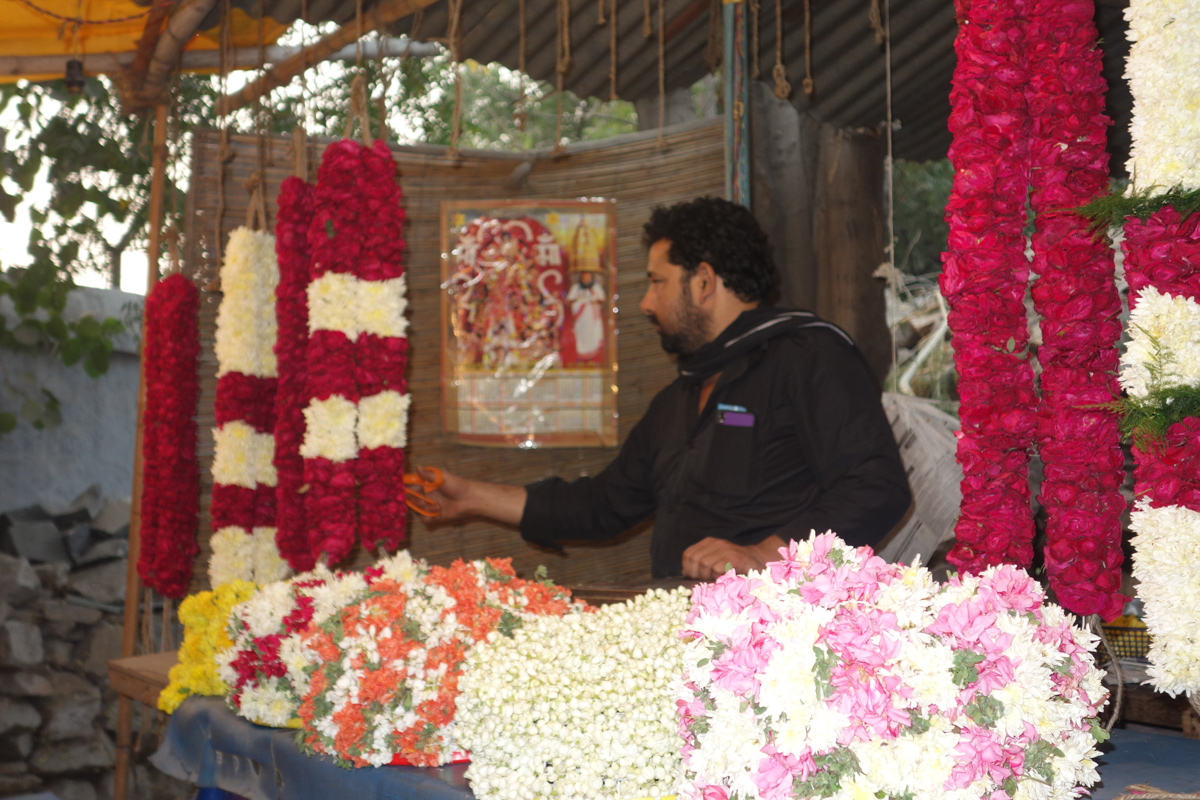
Inside the Malai Mandir Compound; Colorful Flowers for Puja Offerings
My visit to Malai Mandir was on a winter afternoon when the complex was bathed in mild sunshine. It was a Sunday, and the temple was busy, with the sights and sounds being distinctly Tamil; the outer walls painted in bold white and red stripes, women devotees dressed in traditional saris with flowers in their hair, and priests standing by the temple doors in pure white veshtis.
I joined a line of devotees at the main gate, taking off my shoes and handing them to a caretaker, before entering a neat compound flanked with colorful flower stalls. There was a ticket booth in one corner from where I could buy the worship offerings in an orderly way. I paid for the “archanai” puja – offerings of coconut, bananas and betel leaf, which came neatly arranged in a small basket.
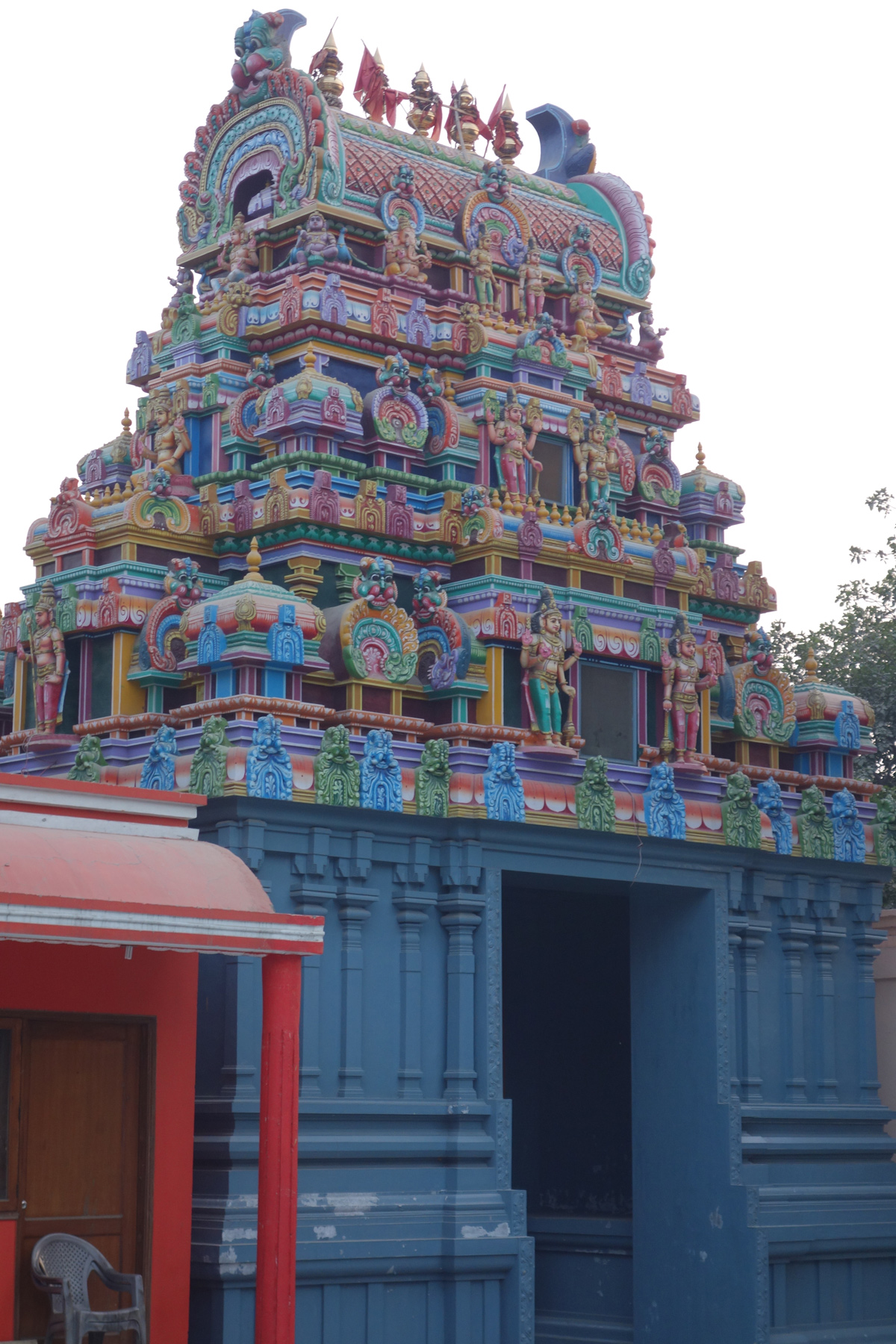 Small Temples Ring The Internal Courtyard, Built in the Pandya Style of Tamil Architecture
Small Temples Ring The Internal Courtyard, Built in the Pandya Style of Tamil ArchitectureThe air was heavy with the sweet smell of incense. Devotees moved from temple to temple, stepping past the traditional white rangolis painted on the floor in front of the temple entrances. They spoke in low voices, their murmurs mixing with the occasional peel of temple bells. I entered each of the temples, joining in the prayers and paying my respects, thanking God for all the privileges I have been given in life.
 Intricate Carvings and Color on the Temple Walls
Intricate Carvings and Color on the Temple WallsBy now dusk was beginning to settle with the last of the daylight fading away. Instead, the twinkling flames of hundreds of shimmering diyas, lit by devotees, brightened up the courtyard. I was sitting close to an elderly lady and her daughter who were patiently painting rangoli patterns on the ascending stairs. We began talking. They had been doing this for a few weeks, mother and daughter visiting together in the winter evenings.
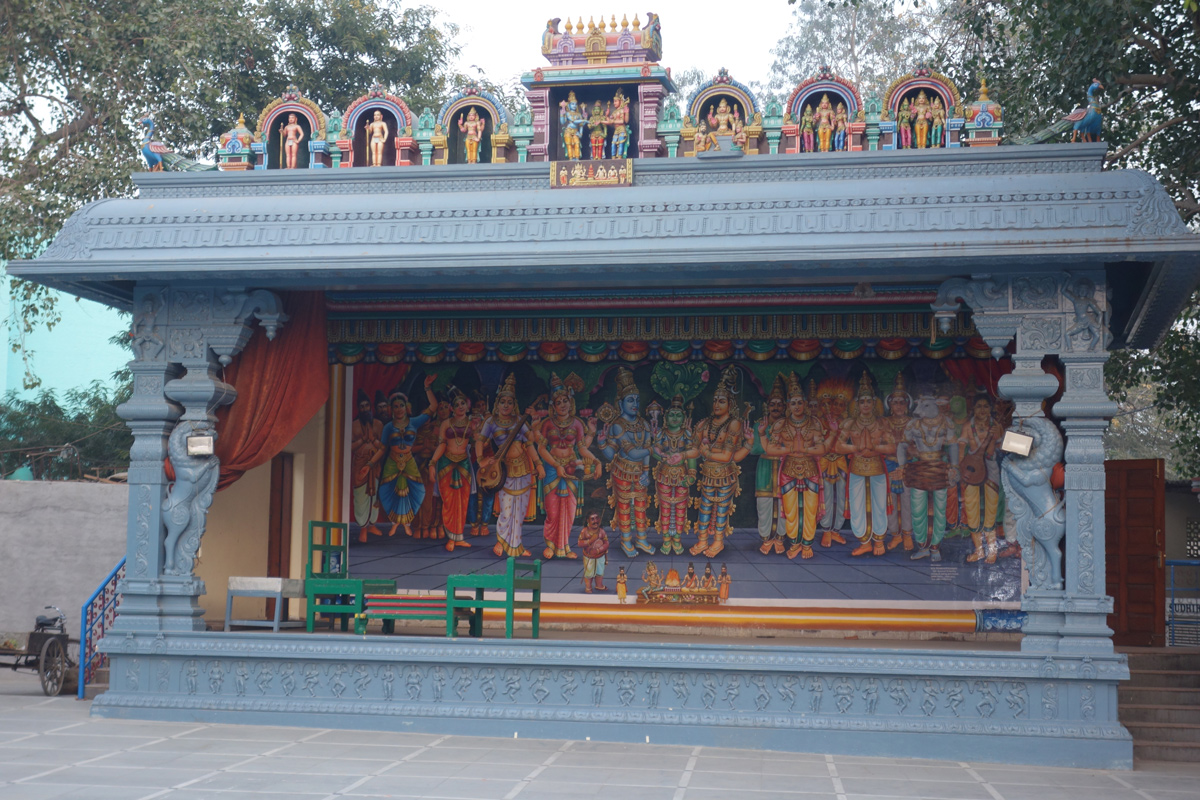 The Painted Kalyana Manadapam; For Conducting Religious Discourses and a Wedding Hall
The Painted Kalyana Manadapam; For Conducting Religious Discourses and a Wedding Hall The Shimmering Diyas Begun to Get Lit, Making Up For The Fading Sunlight
The Shimmering Diyas Begun to Get Lit, Making Up For The Fading Sunlight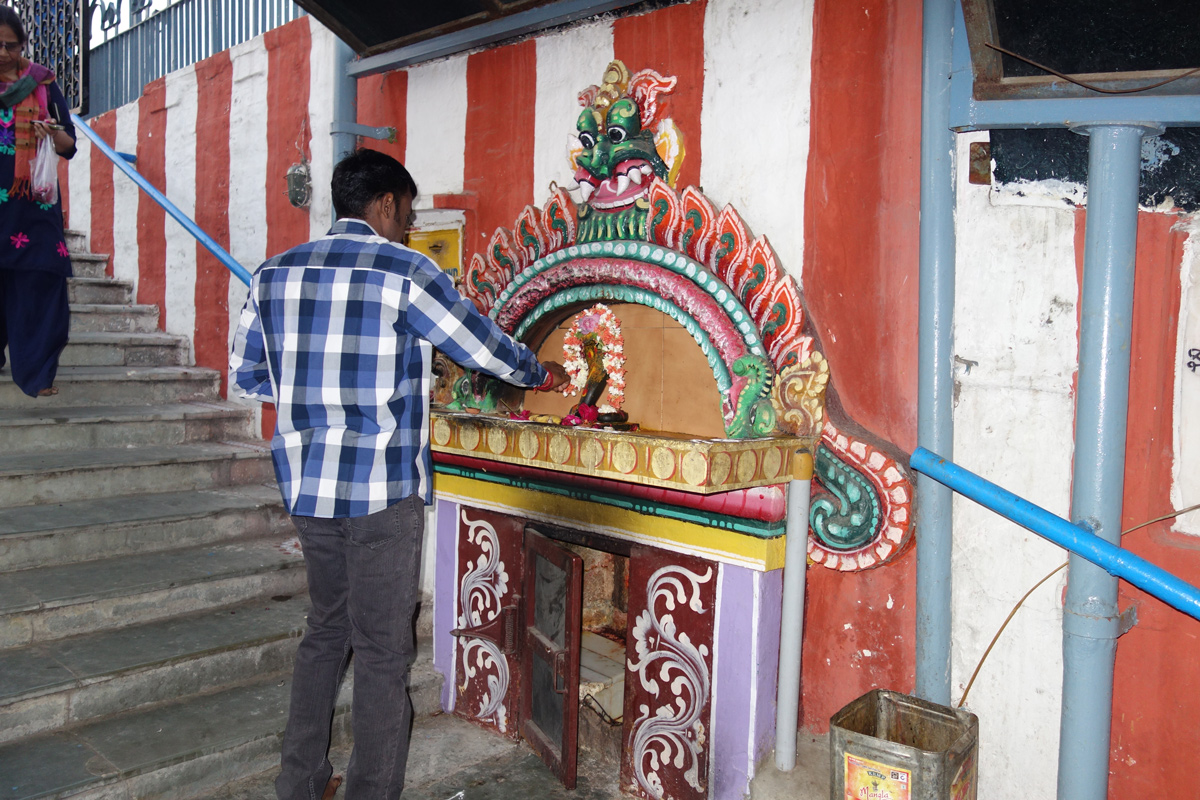 Smaller Shrines Dot The Stairway To The Top
Smaller Shrines Dot The Stairway To The Top 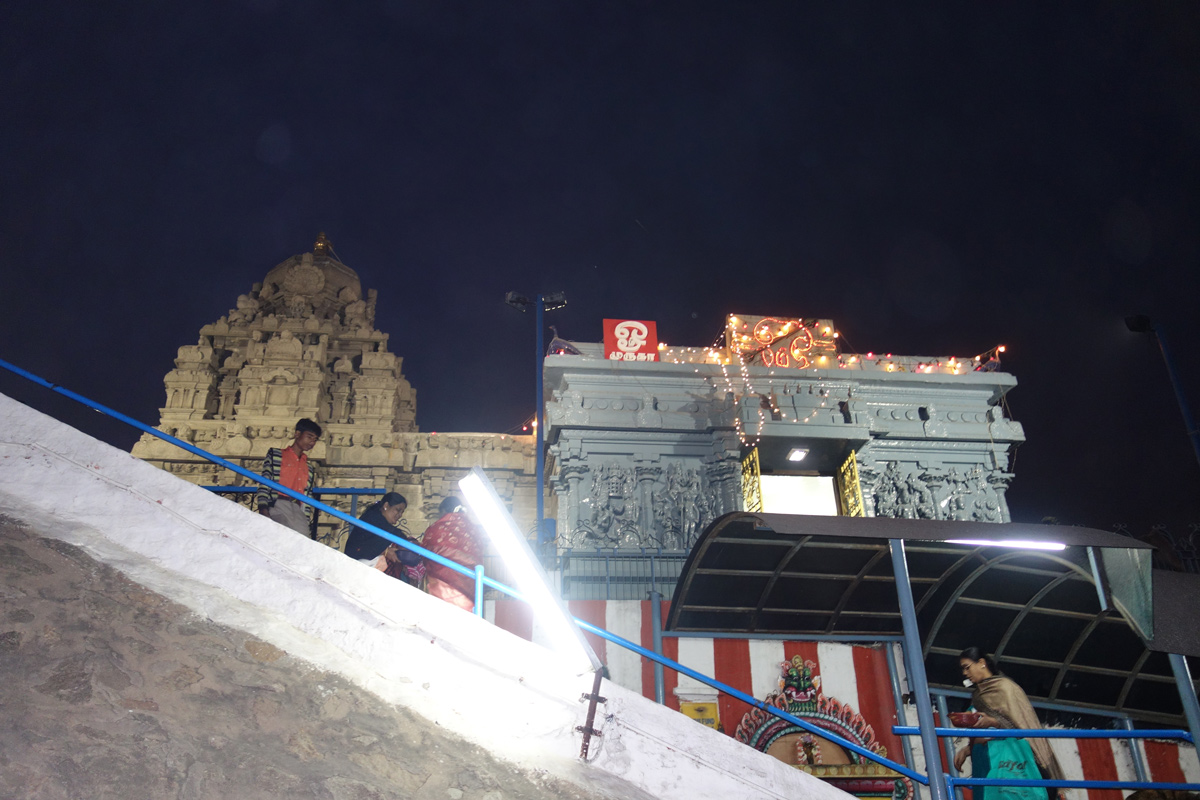 The Main Temple At Dusk ; Yaamirukka Bayamain
The Main Temple At Dusk ; Yaamirukka BayamainHow to get here:
-
- Malai Mandir is in RK Puram, on the main Palam Marg.
- The closest metro station is Vasant Vihar.
Information (for Malai Mandir) :
- Located in RK Puram, entrance from Palam Marg.
- Free Temple parking is available.
- Open 7am-12noon, 5pm-9pm.

